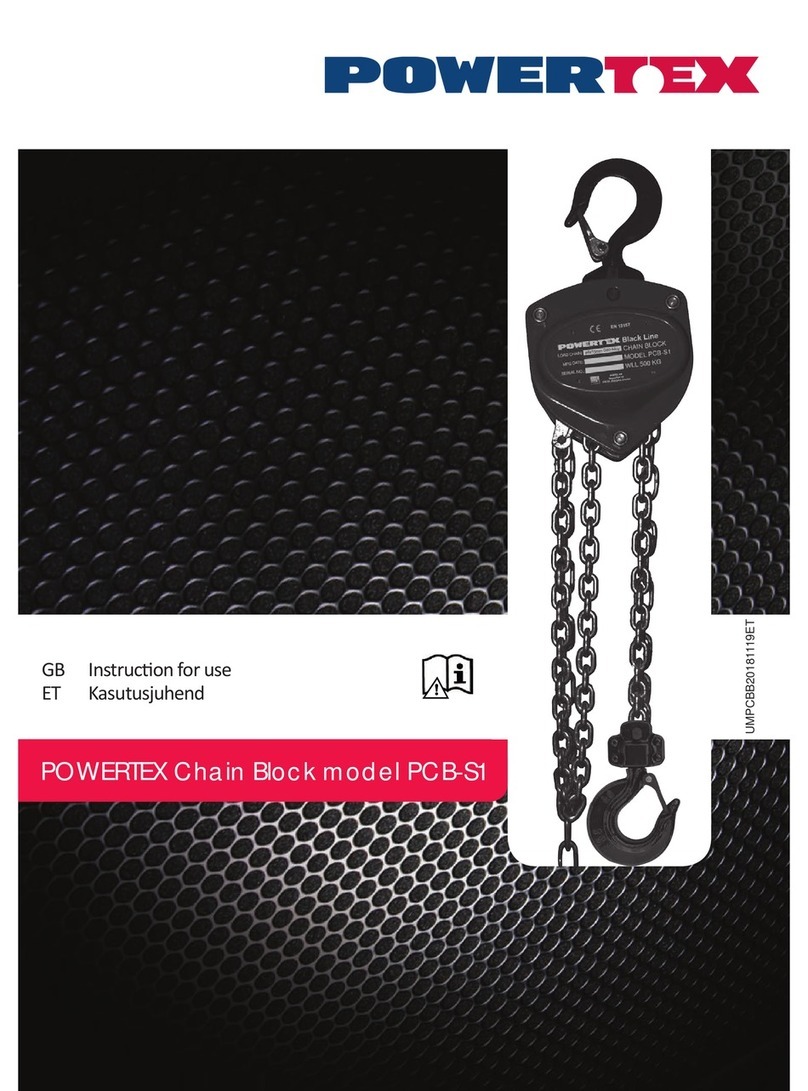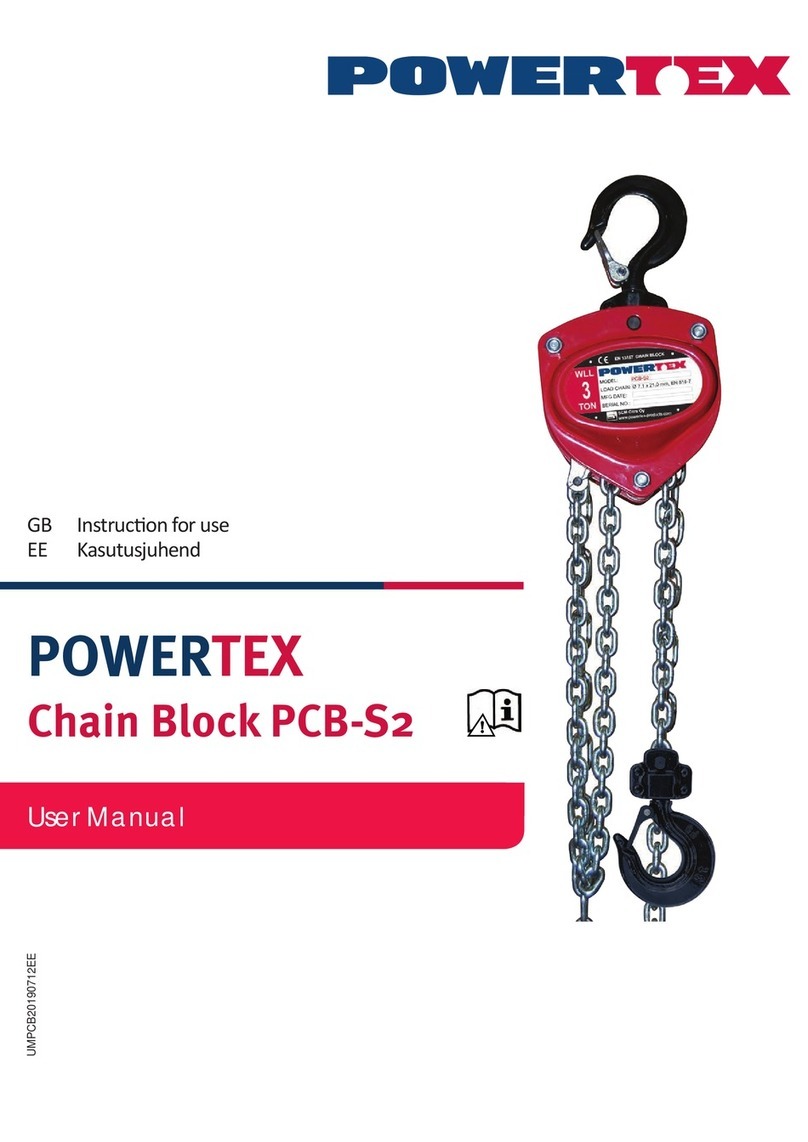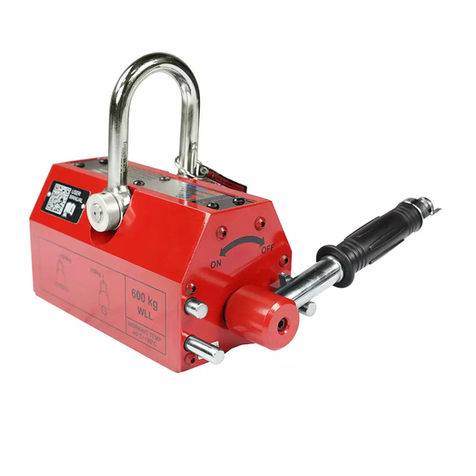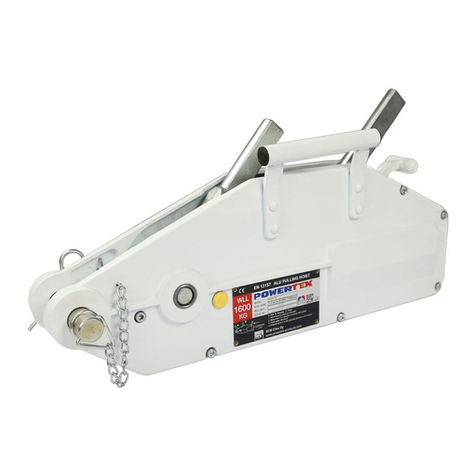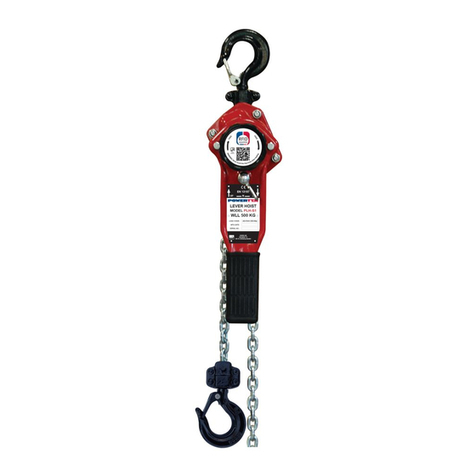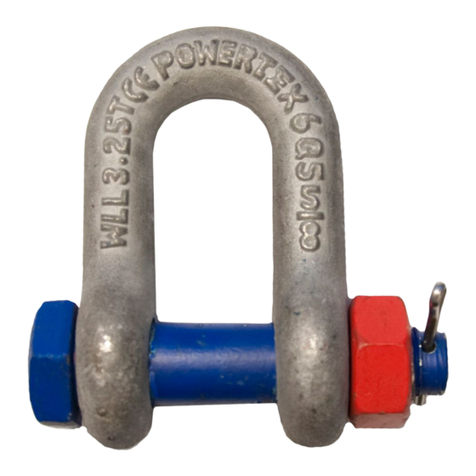
8
1. Uso previsto
Uso:
Los carros se pueden emplear para vigas en I con alas planas (como IPE, HEA o HEB) o vigas con alas inclinadas (como las vigas INP).
En las tablas de datos se muestran los posibles rangos de ancho.
El carro es un chasis engranado y rodante que permite acoplar los equipos de elevación para usarlos en interiores.
No es apto para uso continuo.
No es apto para usarse en estancias con riesgo potencial de explosión.
No es apto para emplearse en atmósferas agresivas.
La unidad, a ser posible, debería instalarse en una estancia cubierta. Si se instala al aire libre, habrá que colocar un tejado o cubrir la unidad.
El equipo de elevación solo podrá modicarse con nuestro consentimiento explícito por escrito.
Consulte las especicaciones técnicas y la descripción del funcionamiento.
Instrucciones de seguridad
El manejo y el mantenimiento deben realizarse exclusivamente por personal cualicado y autorizado.
• Instale el carro únicamente en vigas cuya capacidad de carga se haya comprobado previamente.
• No instale el carro en vigas cónicas.
• No mueva ni retire los topes de los extremos de las vigas.
• No transporte personas ni permita que haya nadie en la zona de peligro.
• No permita que la carga se balancee.
• No permanezca debajo de cargas suspendidas.
• No intente tocar las piezas móviles.
• Los defectos debe solucionarlos de inmediato personal cualicado.
• No deje la carga suspendida sin supervisión en ningún momento.
• Las cargas solo deben elevarse verticalmente. No eleve las cargas en ángulo.
• No use el carro para sacar artículos de otros artículos, liberarlos o arrastrarlos lateralmente.
• El carro solo debe usarse para tirar o empujar la carga.
• No supere la capacidad de carga indicada en las especicaciones técnicas.
• Revise el ancho de rodadura y ajuste la distancia entre las alas del chasis usando las cifras de la tabla.
• La cadena manual está diseñada exclusivamente para desplazar la carga acoplada al equipo de elevación. No debe utilizarse con ninguna
otra nalidad.
• No eleve la carga del suelo sin supervisión.
• Las piezas de alta resistencia como la cadena, el gancho o el engranaje no deben entrar en contacto con hidrógeno libre, ácidos, álcalis,
vapor ni detergentes muy agresivos. Podrían debilitarse y romperse.
• Realice un análisis de riesgos antes de utilizar este dispositivo y compruebe la conformidad CE.
• Temperatura operativa: de -10°C - a +50°C.
La cadena del chasis (cadena manual)
• está diseñada exclusivamente para desplazar el carro y no debe utilizarse con ninguna otra nalidad.
• no debe utilizarse para acoplar una carga.
• no debe arrastrarse sobre bordes alados.
• no debe retorcerse.
• Antes de utilizar el carro, asegúrese de que está correctamente montado en la viga.
• Realice una inspección visual de los rodillos a diario. Preste especial atención a la holgura lateral entre la viga de rodadura y los rodillos.
• Asegúrese de que los pernos están bien jos y que el recorrido es seguro.
Puesta en servicio
Descripción del funcionamiento
El chasis de los rodillos solo puede colocarse en la carga, el gancho de la carga o la cadena de carga del equipo de elevación.
El chasis de los rodillos debe acoplarse a una viga de rodadura horizontal.
La viga de rodadura debe estar plana y horizontal.
El ancho del chasis debe ajustarse separando según al ancho de viga correspondiente.
El chasis está diseñado sin freno.
La carga acoplada se puede mover tirando o empujando la carga (chasis rodante) o tirando de la cadena manual (chasis engranado).
Asegúrese de que la velocidad de movimiento es tal que el usuario puede frenar la carga en cualquier momento.
Montaje e instalación del carro en la viga
Los carros se pueden ajustar a distintos anchos de ala.
1. Determine las dimensiones de la viga (M) (ancho de ala).
2. Compruebe que cumple los datos de la cha.
Instrucciones de instalación
1. Medir el ancho de la viga
2. Ensamblar el carro en la viga de rodadura utilizando las arandelas espaciadoras necesarias situadas entre las placas laterales del carro para
que haya un ligero espacio libre de F mm a cada lado entre las ruedas del carro y el ancho de la viga. Asegúrese de tener el mismo número de
arandelas a cada lado del elemento de elevación para que la carga esté centrada. Siempre debe haber al menos una arandela en el interior y el
exterior de cada placa lateral del carro
3. Las arandelas restantes deben colocarse en el lado exterior de la placa lateral del carro, separadas de la placa de montaje o el engranaje de
la cadena.
4. Coloque el carro en la viga y apriete la placa de montaje con la mano y asegúrese de que todas las ruedas rueden sobre la viga. Apriete las
tuercas de la placa de montaje con una llave
5. Cargue el carro y muévalo sobre la viga para vericar que funcione sin problemas. Si las ruedas están demasiado separadas de la viga o
chirrían contra ella, reajuste el carro quitando o agregando arandelas entre las placas laterales.
Puesta en servicio
Asegúrese de que las cadenas están bien colocadas. No deben estar retorcidas y han de colgar libremente.
Consulte siempre el manual operativo del equipo de elevación que esté empleando.
La malla abierta de la unidad de transmisión debe engrasarse.
Prueba de funcionamiento:
Mueva con cuidado el chasis hasta la posición límite y compruebe la posición de los topes límite.
